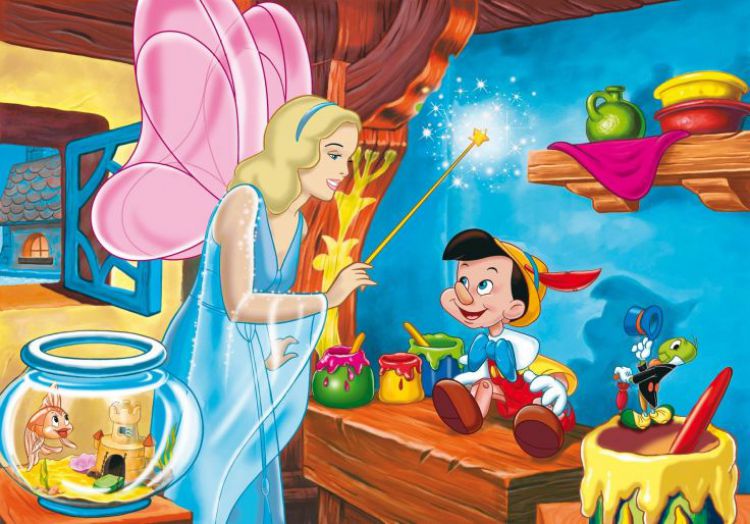
For instance, rather than sending Pinocchio to school the day after the wooden doll comes to life-a la the 1940 film-there is a montage of Gepetto teaching Pinocchio the basics of living, dancing, exercising, and learning right from wrong. But it is also in-keeping with the desire to flesh out Geppetto’s motivations and actions throughout the film. Personally, we think it casts a pall over the whole film. His wishing upon a star is not just a sweet fanciful daydream, but a desperate lament for a parent who has suffered the most unfathomable of horrors. This Geppetto is introduced as grieving the death of his son in a black and white photograph, and presumably of the boy’s mother as well. Yet the change gives the beginning of Pinocchio ‘22 an overwhelming sense of melancholy for a children’s film. Presumably this is done to give Hanks a worthier part for his talents, but we can’t help but suspect Disney wanted to emphasize to modern eyes a clearly benevolent reason for wishing to have a son. Reteaming with his Forrest Gump and Castaway director for the first time since The Polar Express, Hanks’ Geppetto is given a lot more backstory and tragedy.

… That is not how Hanks’ Geppetto is presented. But if these changes feel somewhat subtle in regard to Jiminy, they’re significant for Pinocchio’s father… This approach is in-keeping with developing what is ostensibly supposed to be a more loving home according to modern sensibilities. He also is far more patient with Pinocchio when the little wooden boy begins spinning tall tales and growing his nose out. He is frantic when the untrustworthy fox they call Honest John (Keegan-Michael Key) seduces Pinocchio into show business. He also repeatedly steps back from helping Pinocchio after the lad makes his own decisions.Ĭonversely, the new Jiminy is much more hands on in helping guide and nurturing Pinocchio’s conscience. “Go on and make a fool of yourself,” he chides when Pinocchio first performs the “No Strings Attached” song for the wicked puppeteer Stromboli. While in both versions Jiminy agrees to be Pinocchio’s conscience, the original Jiminy often takes a hands-off approach when Pinocchio disobeys his advice. There are also more subtle differences that speak to how perceptions about parenting have changed since 1940. That is when Jiminy isn’t making actual cricket noises on occasion to make this feel more like it’s “live-action.”

The effect is pretty similar to Gordon-Levitt’s outrageous French accent in his and Zemeckis’ last live-action collaboration, The Walk (2015). In the new movie, Jiminy sounds like he spent his whole life in Missoura’ before moving to Italy. In addition to Gordon-Levitt not being as natural of a singer as Edwards, the younger actor also plays up Edwards’ authentic Southern accent, which can only faintly be heard in the 1940 film. However, there are distinct differences between this Jiminy and the one Cliff Edwards’ voice made iconic in the original 1940 film. As voiced by Gordon-Levitt, Jiminy is still the vaguely trampish vagabond cricket who wanders into the home of toymaker Geppetto ( Tom Hanks). This prologue plays like a promise for the differences that are to come between the two Pinocchio movies… Jiminy CricketĪ good place to continue underscoring those differences is with Jiminy himself.

But right down to the garishness of Jiminy’s awkward three-dimensional rendering, you can tell something is off. It is inviting parents to smirk and children to giggle.
#Who wrote pinocchio story movie
Whereas the 1940 film starts off in an animated drawing room in which a treasured copy of Carlo Collodi’s The Adventures of Pinocchio children’s story is just waiting to be read, and then gradually introduces Jiminy as a classic children’s storyteller who’ll sing a whole song before beginning his tale, the 2022 movie opens with Jiminy making a self-aware nod and wink at how the tune has become as synonymous with Disney as Mickey Mouse. This in itself is a nod to how the original Pinocchio began with the classic two-dimensional Jiminy (voiced by Cliff Edwards) singing “When You Wish Upon a Star.” However, just by the way Gordon-Levitt’s Jiminy breaks the fourth wall during the title cards to begin talking to the audience, you should know that this is the same and different-and if we’re being honest, inferior. Now voiced by Joseph Gordon-Levitt, ol’ Jiminy sings a few bars of that fabled ditty.


 0 kommentar(er)
0 kommentar(er)
